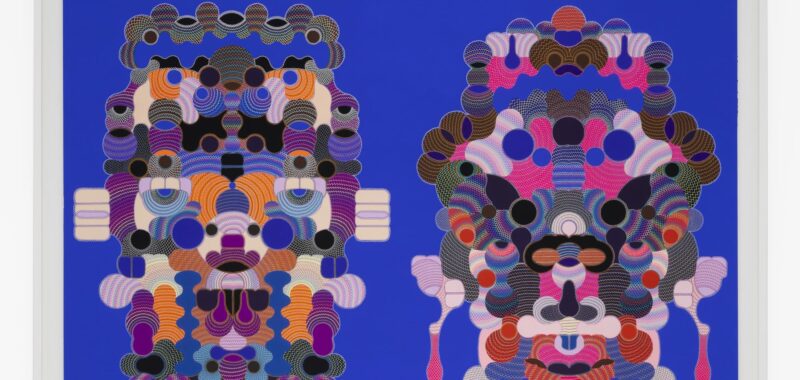CHICAGO — In 1951, the French painter, sculptor, and Art Brut founder Jean Dubuffet delivered a lecture at the Chicago Arts Club titled “Anti-Cultural Positions.” There, he said that the only Chicago artist he wanted to meet was Ivan Albright, “the master of the macabre,” who was known for his morbidly detailed depictions of the human figure. The artists who attended that lecture include George Cohen, Leon Golub, Theodore Halkin, and June Leaf, all of whom would later be considered members of the Monster Roster, a term coined by the art critic Franz Schulze in 1959.
In retrospect, Albright’s idiosyncrasy, along with Chicago’s museums, the School of the Art Institute, and the city’s isolation from New York’s art world set Chicago’s artists on their own course, distinct from those of their Manhattan counterparts. That dynamic history has always intrigued me.
Even after the internet opened us up to the world, Chicago artists have continued to respond to their own rich history, and make some something out of it. With each succeeding generation, it gets denser and more complex as it branches into new territory.

I was struck by this ability to be fresh and challenging, and contribute to this history, when I encountered the exhibition Geoffrey Todd Smith: Assembly at Western Exhibitions. The show’s 15 works on paper are rendered with humble materials — gouache and a gel pen — and range in size from 6 by 4 to 47 1/2 by 60 inches. I see Smith’s work as an implicit critique the costly fabrication and materials that are common in New York’s art galleries, and their embrace of large-scale works, something long rejected in Chicago.
The works’ monochromatic grounds provide a basis for the palette Smith uses to depict his compressed, multi-part forms. His vocabulary consists primarily of circles, augmented by round-edged rectangles and shapes resembling a microphone. Using different colored inks, he meticulously draws zigzagging lines within the shapes or around their edges, which make the circles appear volumetric. Continuities and disruptions of the lines and colors add to the work’s visual intricacy.

Smith’s art sits on the cusp between eccentric abstraction and automated sci-fi figures, whose vibratory color relationships share something with Op art and Georges Seurat’s pointillist masterpiece “A Sunday on La Grande Jatte” (1884–86), in the collection of the Art Institute of Chicago. The interaction of interlocking and overlapping circles, and shifts between symmetry and asymmetry, keep the viewer’s attention moving and refocusing. In this way, for all the associations they may stir up, these pieces are really about seeing — a subject that is not often held in high regard these days. This emphasis on seeing and opticality is also what distinguishes Smith’s art from earlier generations of Chicago art, who were committed to making images, and rejected abstraction. Smith employs abstract repetition to push up against an image without fully crossing over. He may have been guided by Chicago’s preoccupation with the distorted figure, but where he has gone is unexpected.
We do not know if Smith is depicting machines, humans in protective suits, or highly decorated faces of beings from an unknown world. With their humanoid eyes, and the quirky titles of the works, his pieces are emblematic of a world that we have long lived in, from Marvel Comics and movies to toys and video games, and the one we’re preparing ourselves for, dominated by AI. It is an imaginative domain where anything can happen, allowing us to contemplate the unstoppable incursions that robots and AI have made in our lives, and consider the different consequences of our automaton future. What is unsettling — and Smith clearly knows this — is that whatever we imagine will not be what happens.


Geoffrey Todd Smith: Assembly continues at Western Exhibitions (1709 West Chicago Avenue, Chicago, Illinois) through April 12. The exhibition was organized by the gallery.

